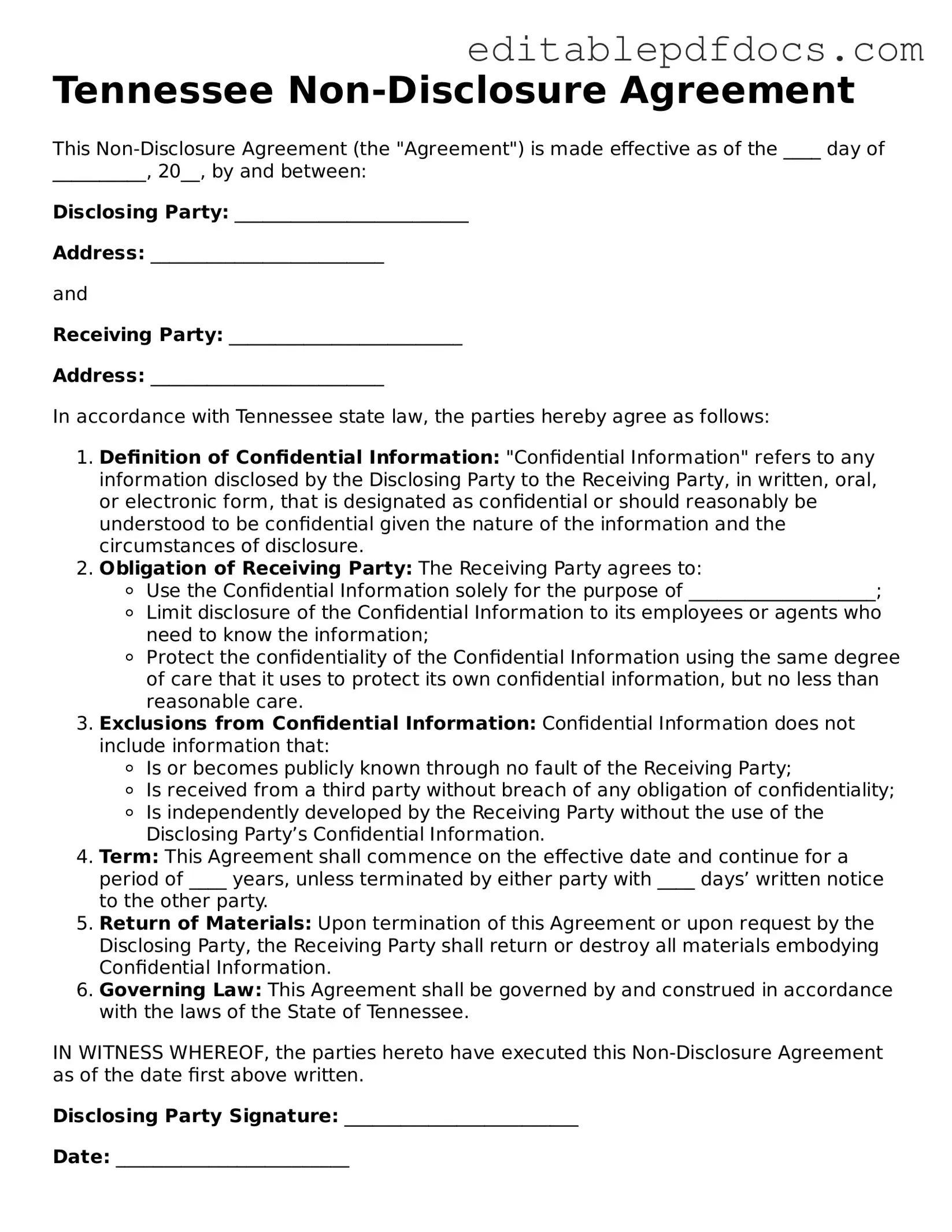When filling out a Tennessee Non-disclosure Agreement (NDA), it’s easy to overlook important details. One common mistake is failing to clearly define the confidential information. Without a precise description, the NDA may not protect the information as intended. It’s essential to specify what constitutes confidential information to avoid any ambiguity.
Another frequent error is not identifying the parties involved. An NDA should clearly state who is bound by the agreement. Omitting names or using vague terms can lead to misunderstandings later. Ensure that all parties are named and their roles are defined to establish clear obligations.
Some individuals forget to include the duration of the confidentiality obligation. An NDA should specify how long the information must remain confidential. If this timeframe is not addressed, the agreement may lack enforceability. Consider the nature of the information when deciding on an appropriate duration.
Additionally, people often neglect to address the consequences of a breach. It’s crucial to outline what happens if someone violates the NDA. Including potential legal remedies or penalties can deter breaches and provide a clear course of action if they occur.
Another mistake is using overly complex language. While legal documents often contain formal language, an NDA should be understandable to all parties involved. Avoiding jargon helps ensure that everyone knows their rights and responsibilities under the agreement.
Some individuals fail to have the NDA reviewed by a legal professional. While it may seem unnecessary, a lawyer can provide valuable insights and help identify any potential issues. Investing in legal review can save time and resources in the long run.
People sometimes forget to date the agreement. A date is essential for establishing when the NDA takes effect. Without a date, it can be challenging to determine the timeline of confidentiality obligations.
Additionally, individuals might overlook the need for signatures. An NDA is not enforceable without the signatures of all parties involved. Ensure that everyone signs the document to validate the agreement.
Finally, many people do not keep copies of the signed NDA. After all parties have signed, it’s important to distribute copies to everyone involved. Retaining a copy for personal records can be crucial if any disputes arise in the future.
